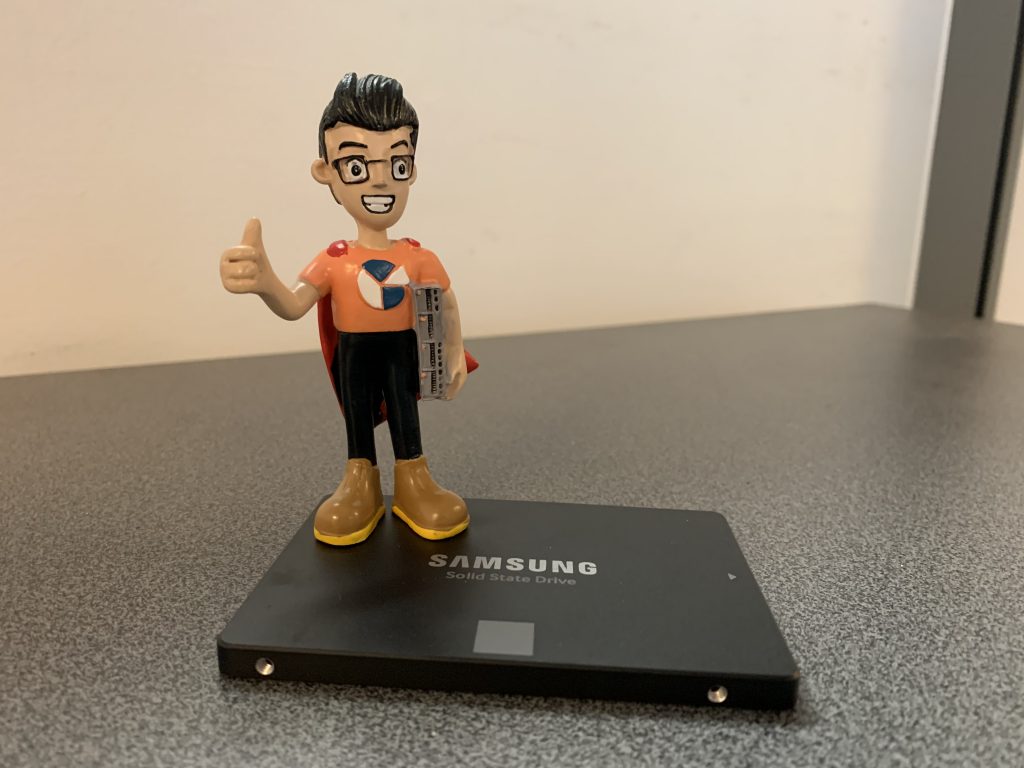NVMe vs SSD vs SATA



NVMe
NVMe disks are the newest type of storage to hit the market. Whilst SSDs are quicker than normal SATA disks, they do still use the SATA interface to connect to the motherboard, and thus are limited to 6Gbps set by the SATA3 specification.
NVMe disks however, connect to the motherboard via the PCIe bus. This provides a much more direct route to the CPU and RAM, allowing for significantly increased speeds.
The major upside to NVMe disks is the speed, far above mechanical SATA disks and providing a significant improvement over SSDs too.
The major downsides to NVMe disks is the cost and hardware support. Costs are significantly higher to purchase them than equivalent storage SSDs, and like SSDs, cannot provide the levels of storage seen in mechanical SATA disks, however Fraction Servers can offer 2TB NVMe disks. The other downside is the hardware support. Being a reasonably new technology, not all hardware vendors have widespread support for this format yet, although most Supermicro hardware deployed by Fraction Servers can support these disks.
SSD
SSD disks (named for the physical type) are electronic storage devices that use integrated circuits and transistors to store data on them. The data is read and written electronically across the different circuits within.
First coming to prominence around 2010, they were initially only available with limited storage, especially compared to SATA disks from the same time period, with units often having 64GB or 128GB of storage. As with all new technologies, initial costs were high but have since dropped, but are still higher than SATA disks.
The major upside to SSDs is their speed compared to SATA disks. Because all storage is electronic and not mechanical, read and write speeds are much quicker. In addition because there are no moving components, SSDs are much more reliable than SATA disks.
The major downsides are storage sizes and costs. Whilst capacity is always increasing (Fraction Servers offers 4TB SSDs) they do not offer the same amount of storage as SATA disks. In addition, costs are still higher, especially on the larger capacity disks. However, increasing numbers of customers are choosing these as the speed benefit outweighs the costs.
SATA
SATA disks (named for the connection type on them, Serial AT Attachment) are mechanical storage that use a spinning platter of flat magnetic disks read by a needle, similar in principle to CD/DVD drives and vinyl records. As this disks spin round, the needle moves across to read the data. This technology is the oldest available with mechanical disks becoming available in the 70s and 80s. The major upsides to SATA disks are their storage capacity and archive capacity.
Disks are now commonly available upto 14TB on a single unit, which when combined in a RAID array can provide significant levels of storage. Because they are magneto-mechanical, data does not “fade” when they are placed in storage for long periods of time.
The major downside to these disks is however the speed. Because they are mechanical and not electrical, this has a significant impact on the read and write speeds.
Which should you choose?
| NVMe | SSD | SATA | |
| Interface Type | PCIe Gen 3.0 x4, NVMe 1.3 | SATA-III | SATA-III |
| Read/Write Speed | 3,500 MB/s | Around 500 MB/s | Around 130 MB/s |
| IOPS | Up to 500,000 IOPS | Up to 100,000 IOPS | Up to 100 IOPS |
| Reliability (MTBF) | 1.5 Million Hours | 1.5 Million Hours | About 50,000 Hours |
| Commonly Available Capacities | 250GB - 4TB | 250GB - 4TB | 500GB - 20TB |
| Hot-Swap Capable | No - U.2 Format Only | Yes | Yes |
| Average 500GB Drive Price | £85 | £60 | £40 |
| S.M.A.R.T Support | Yes | Yes | Yes |
| PassMark Benchmark Score | 21,975 | 4737 | 1040 |


